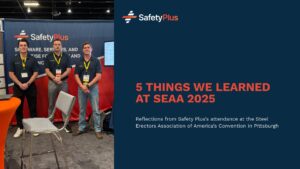Staying off OSHA’s SVL (Severe Violator List)
Staying off of OSHA’s Severe Violator List is important for any business to maintain a safe work environment and avoid costly penalties. The Severe Violator List (SVL) is a program launched by the Occupational Safety and Health Administration (OSHA) to focus on employers who have committed severe or repeated violations of workplace safety regulations. Being on the SVL can lead to increased scrutiny from OSHA, higher fines, and a damaged reputation.
Here are some steps that businesses can take to stay off of OSHA’s Severe Violator List:
- Develop a comprehensive safety program: The first step in staying off of OSHA’s Severe Violator List is to develop a comprehensive safety program. This program should include policies, procedures, and training to prevent accidents and injuries in the workplace. The safety program should also be regularly reviewed and updated to ensure that it remains effective.
- Conduct regular safety audits: Regular safety audits can help identify potential hazards and prevent accidents before they occur. Employers should conduct regular safety audits and inspections to identify potential hazards and take corrective action.
- Provide adequate training: Adequate training is crucial to ensure that employees understand the potential hazards in the workplace and how to prevent them. Employers should provide regular training to employees on safety procedures, hazard recognition, and emergency response.
- Promote a culture of safety: Employers should promote a culture of safety within the workplace. This can be accomplished by encouraging employees to report safety concerns and hazards, recognizing and rewarding safe behavior, and making safety a top priority in all aspects of the business.
- Respond quickly to safety concerns: When safety concerns are identified, employers should respond quickly to address them. This includes investigating the concern, taking corrective action, and communicating the results of the investigation to employees.
- Maintain accurate records: Accurate records are essential for demonstrating compliance with OSHA regulations. Employers should maintain accurate records of safety inspections, safety training, and safety incidents.
- Respond to citations promptly: If OSHA issues citations, employers should respond promptly and take corrective action to address the violations. Employers can also contest citations if they believe they are unwarranted or the penalties are excessive.
Staying off of OSHA’s Severe Violator List is crucial for any business. By following the steps detailed above, employers can ensure that they are in compliance with OSHA regulations and provide a safe workplace for their employees. For professional advice on how to implement any of the above steps or for tools that will help improve your safety program and help you avoid the SVL, request a consult with a Safety Plus safety expert at any time.
Recommended Reading
Partner Spotlight: MASC Safety Consulting – Machine Safety & Compliance Expertise for High-Hazard Operations
At Safety Plus, we recognize the critical importance of machine safety and regulatory compliance in industrial operations. To support our clients in achieving these objectives, we are proud to spotlight MASC Safety Consulting, a firm that provides comprehensive safety services tailored to industrial operations. Featured Resource: Comprehensive Machine Safety Services Available Through Our Partner Network…
5 Things We Learned at SEAA 2025
Reflections about trends in the steel erection industry from Safety Plus’s attendance at the Steel Erectors Association of America’s Convention and Trade Show in Pittsburgh The 2025 SEAA Convention & Trade Show in the Steel City of Pittsburgh was nothing short of inspiring! Safety Plus was humbled to sponsor and exhibit at this event for the…
Partner Spotlight: Gas Monitor Competence Training – What OSHA Leaves Out, This Course Delivers
At Safety Plus, we’re committed to keeping workers safe by connecting our clients with exceptional training resources that fill critical knowledge gaps. An often overlooked, but potentially life-saving, tool on a jobsite is the gas monitor. That’s why we’ve partnered with Gas Monitor Competence Training, a specialized program that teaches exactly what most safety curriculums…
National Work Zone Awareness Week: Keeping Workers and Drivers Safe Through Smarter Planning and Proactive Safety
Each spring, as construction season ramps up, National Work Zone Awareness Week (NWZAW) brings awareness to work-zone driving safety. Taking place April 21–25 this year, this campaign unites roadway safety professionals, construction crews, and transportation officials around a shared mission of protecting lives in and around work zones. The theme for 2025, “Respect the Zone…
SAFETY MANAGEMENT SIMPLIFIED
Prevent Tragedy and Scale Effectively by Making Safe Work Efficient




